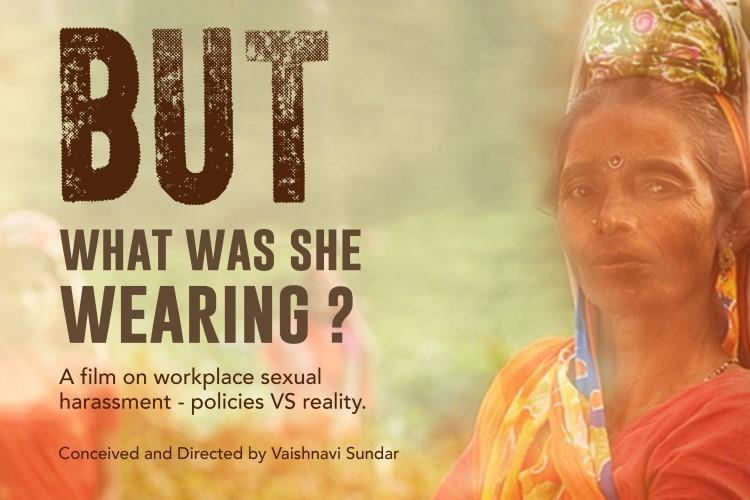India’s first feature length documentary on workplace harassment
Chennai based indie film-maker, Vaishnavi Sundar’s documentary examines the Sexual Harassment of Women at Workplace (Prevention, Prohibition and Redressal) Act 2013. It talks about the Act’s provisions and the implementations of the same.
One of the most harrowing aspects of the everyday life of an Indian woman lies in her workplace. It has nothing to do with ticking deadlines or the constant flow of work pressure barraging upon her. Mostly, it is the male colleagues who are to be blamed for making it impossible for a woman to feel safe with a constant stream of unwanted sexual attention. Women are judged either for being too friendly or for the way they dress up.
Only in 2013 was the Sexual Harassment of Women at Workplace (Prevention, Prohibition and Redressal) Act based on the Vaishnavi reforms of 1997 passed, and in the five years that have followed awareness on the issue has been growing. And yet, complaints persist and questions are asked regarding the law’s validity and its implementation.
With the #MeToo campaign gaining steam around the country and awareness against workplace sexual harassment being at an all-time high, Chennai based film-maker, activist and writer, Vaishnavi Sundar’s documentary could not have had a more apt time.
Asking the tough questions
The documentary follows Sundar as she looks into the provisions of the 2013 Act and examines their implementation and asks whether the Act has been effective at all. The 110-minute film is divided into 17 segments where Sundar takes on a range of questions related to the Act: whether all kinds of working women are covered by it, the challenges faced by a working woman in India, what are the recourses to be taken in the case of harassment – in theory which is followed by what actually happens in practice and what the impact of harassment is on a woman’s health.
Sundar and her crew interviewed 32 women from various walks of life covering different socio economic categories and professions. Each of the interviewed women are either a survivor of sexual harassment or have worked closely with someone who has faced the plight. They reveal a huge gorge between the written word of the law and in its application. In some cases, the problem lies with the Internal Complaints Committee (ICC) while in others, the root of the dilemma lies in the perception of sexual harassment by the employers and colleagues.
The major question posed by the film is put in the title of one of the 17 segments, “There is an Act now, but is there a solution?”
Pitfalls and setbacks
One of the major hurdles faced by Sundar while filming the project was finding the right people. “Finding the people I wanted to interview was a continuous process. I wanted the film to be as holistic as possible. I wanted to make sure I had women from every single demographic. When I say working women, who do I mean? And what is the definition of a workplace? It came down to who I am talking to, what their history is and what it is that he or she can bring into the film that is unique. I had the edit and the skeleton of my film even before the film was made,” she told the Indian media.
Another problem that the project ran into during its initial stages was the funding. However, the crowdfunding campaign that Sundar and company had started gave a warm response. Amounts ranging from INR 10,000 to as low as INR 10 was contributed to the cause. In Sundar’s words, “You may get a one-off INR 10,000 or a INR 5,000, but it is a string of INR 10 that eventually makes a film.”
The other aspect that really stands out in Sundar’s documentary is its all-female crew. Three years ago, Sundar founded a cinema collective called Women Making Films. “It is through this collective that comprises women technicians and filmmakers from across the world that I put together a crew,” she said. “All the heads of the department are women. It is also through this collective that I do screenings all over the world.”
The film was premiered at the Max Mueller Bhavan in Chennai on November 3 to critical aplomb.













